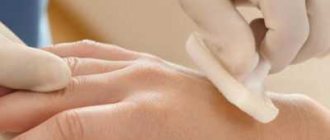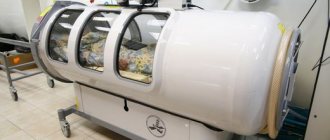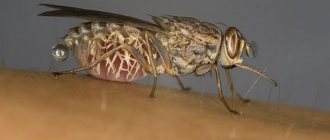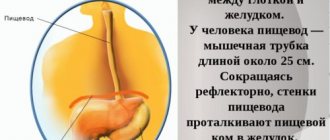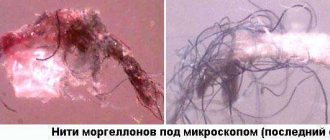Reasons for the formation of adhesions in the pelvis in women
Pelvic adhesive disease is detected in women after surgery or previous inflammatory diseases. After the first surgical intervention, the risk of cord formation does not exceed 15–16%, after repeated operations it increases to 96%. This is due to the immune system, which spends a large amount of internal resources to recover after surgical treatment. In women, the most common abdominal operation is cesarean section, the removal of benign tumors of the internal genital organs.
In addition to abdominal surgical operations, the causes of connective tissue growth are:
- Hemorrhages in the pelvic organs after a ruptured tube during ectopic pregnancy, ovarian apoplexy due to polycystic disease.
- Appendicitis.
- Endometriosis, if the lesions are located on the peritoneum and neighboring organs. During menstruation, endometriotic tissue bleeds and secretions enter the pelvis.
- Injuries due to closed injuries to organs resulting in blood leakage. Bleeding sometimes stops due to the work of platelets, but the hematoma does not go away and serves as a focus for the development of the inflammatory process.
- Infectious inflammatory processes due to promiscuity or due to the entry of microbes from other organs and systems. The toxic effects of microbial waste products cause a protective reaction in the body, as a result of which connective tissue grows, trying to protect organs from bacteria. When infected with tubercle bacilli, bacteria often penetrate into the appendages.
- Intrauterine device.
Typically, a combination of two or more reasons is necessary for an adhesive process to occur. For example: chronic inflammation that does not cause discomfort and sudden bleeding due to injury, infection and surgery.
Risk factors are:
- unbalanced diet and lack of resources in the body to fight the disease;
- hypothermia;
- failure to comply with personal hygiene rules during sexual intercourse, refusal of barrier methods of protection.
Women with low social status are more likely to develop symptoms of adhesions in the pelvis.
Symptoms of adhesions
At the beginning of the disease, as a rule, the patient does not even suspect its presence, since there are no symptoms. As the adhesive process progresses, mild signs of discomfort may appear. At some point, the disease progresses sharply and enters the acute phase. It is during this period that vivid symptoms of the disease develop. We can talk about the presence of adhesions in the pelvis when the following manifestations of the disease are observed:
Laparoscopic adhesiolysis can significantly improve the quality of life of women with chronic pelvic pain due to adhesions. This procedure shows similar results to more invasive forms of surgery when it comes to large adhesions. However, this can be time-consuming, technically challenging and carries some risk.
Non-surgical treatment of adhesions
Most women who prefer laparoscopic adhesiolysis. Patients are discharged the same day for procedures that require no large abdominal incisions, experience minimal complications, and return to full activity within one week of the procedure. Alternatives to surgery include.
- severe pain in the area of the uterus and appendages;
- severe nausea;
- repeated vomiting;
- increase in temperature from subfebrile values to 40 degrees;
- increased heart rate;
- increased blood pressure;
- significant drowsiness;
- severe weakness;
- severe metabolic disorder.
Doctors assess the patient's condition in the acute phase as severe or extremely serious, requiring immediate medical intervention. During this period, even with slight pressure on the abdomen, the pain in the uterine area intensifies to the point of unbearable. With this nature of the disease, postponing treatment is strictly prohibited.
Medication is often the first choice of treatment for acute pain and is part of the treatment of chronic pain loads with physical therapy lifestyle changes. Although they may be helpful, medications are not cures. They may cause side effects or may not be effective and are often expensive. A hospital specialist can advise you on non-drug treatment options that are best suited to your situation.
Find information about improving your overall health and well-being Improved relationships Special health conditions and their treatments Children's health Nutrition, nutrition and healthy recipes Medicines Exercise or fitness Others. You found what you were looking for? The following content is displayed as tabs. Once you've activated a link, scroll to the bottom of the list to view related content. An activated link is defined as the active tab.
If the disease is not completely treated after an exacerbation, it becomes chronic, which manifests itself with the following symptoms:
- alternating diarrhea and constipation;
- constant aching pain in the lower abdomen;
- menstrual irregularities.
If you suspect the presence of an adhesive process, you should immediately seek medical help. Any delay in therapy can lead to serious complications and, moreover, can become a serious threat to the patient’s life.
Gastroenteritis in Children Gastroenteritis, or gastro, can be dangerous for very young children. New Hepatitis C Treatments - Frequently Asked Questions for Patients In Australia, hepatitis C is most often spread through the sharing of unsterile injecting drug equipment. Gastro is common in young children and spreads easily. . Adhesions are abnormal bands of scar tissue that form between internal organs and glue them together. Typically, scar tissue forms only in the damaged area as part of the healing process, but in the case of adhesions, it also appears on adjacent surfaces and can connect them.
How adhesions form
The peritoneum is covered on the inside with parietal tissue, and the organs are covered with visceral tissue. Both tissues are smooth and do not interfere with the organs’ movement relative to each other. But under unfavorable conditions these processes are disrupted.
Any damage to the peritoneal tissue triggers the regeneration process. Substances are released - mediators, which in turn stimulate fibroblast cells. They secrete a specific protein, fibrin, whose function is to inhibit the development and spread of the inflammatory process. If it is treated on time, the fibrin layer does not form and the inflammation goes away. In large quantities, the protein is capable of gluing organs together, but this is possible in the case of a long-term, indolent disease.
The occurrence of a fibrin plug in the fallopian tubes is especially dangerous. Since the exudate continues to form, and the pipe is blocked on all sides by fibrinous plugs, it has nowhere to go. If you do not consult a doctor in time and do not perform surgery, the pipe may rupture and develop purulent peritonitis, which can be fatal. Salpingoophoritis is one of the causes of infertility and ectopic pregnancy.
There is a high risk that the ovary will be involved in the inflammatory process, which is melted by the purulent contents of the tube. A tubo-ovarian tumor occurs, which is difficult to treat, as it glues together all the pelvic organs with adhesions: the bladder, uterus, and intestines. The surgeon needs to cut through the adhesions without damaging healthy organs and blood vessels. Removing such a tumor takes a long time and poses a danger to the woman’s reproductive system.
Complication of adhesions in the pelvic organs
If the disease is not addressed in a timely manner, it can cause serious complications. In most cases, doctors diagnose the following consequences of adhesions in the pelvis:
- bending of the uterine body;
- ectopic pregnancy;
- rupture of the fallopian tube;
- ovarian rupture;
- internal bleeding;
- sepsis.
Complications of the disease are difficult to treat and, as a rule, do not go away completely and without a trace. Given this, you should start dealing with this problem as early as possible.
Chronic pelvic pain syndrome
Abdominal adhesions occur mainly after abdominal surgery or inflammation, as well as pelvic spasms after gynecological operations or pelvic inflammatory diseases, mainly as a result of sexually transmitted diseases. Abdominal or pelvic adhesions can develop within the intestines and uterus or between the surfaces of organs and the abdominal cavity, thereby pulling organs from their original positions, obstructing the passage of food and blood supply, causing abdominal or pelvic pain, bloating, constipation, urinary retention, and irregular menstrual periods. bleeding or infertility.
Stages of pathology development
At the first stage, adhesions are located near the appendages, without interfering with the movement of the egg and its capture by sperm. The villi of the fallopian tubes are not affected and are able to deliver a fertilized egg to the uterus.
The second stage is characterized by the absence of contact between the egg and sperm, as a result the woman cannot become pregnant and consults a doctor. The fallopian tubes may be partially affected, leading to ectopic pregnancy.
The third stage is characterized by complete blockage of the tubes, their torsion, which makes pregnancy absolutely impossible.
Causes of adhesions
- They can appear in the postoperative period:
— operations in the field of gynecology;
- urology;
— as well as operations to remove the appendix;
- surgical interventions on the intestines.
- Various ailments associated with the process of inflammation. Adhesions appear due to:
- for inflammatory processes in the fallopian tubes and other ailments.
Lyophilization treatment
Hysteroscopy can detect uterine adhesions and hysterosalpingography adhesions in the uterus and fallopian tubes. Typically, adhesions can be successfully removed using a procedure called adhesive lysis or adhesiolysis. This can be done during laparoscopy or during open surgery called laparotomy. In both cases, scissors, harmonic scalpels, laser or electrosurgery can be used; work can last from 2 to 4 hours. Adexiolysis is usually successful, but each adhesion removal procedure may result in new adhesions, so this operation should only be performed for severe and debilitating symptoms and to resolve intestinal obstruction, infertility, or other complications.
- Often the formation of adhesions is promoted by rupture, during which internal bleeding occurs. Their occurrence is often caused by the presence of ulcerative bleeding.
- The formation of adhesions in the pelvis is caused by abortion, diagnostic curettage, inserted intrauterine device, as well as operations associated with cauterization of the uterine cervix.
- The adhesive process can form due to inflammatory processes in the abdominal cavity.
- The emergence of infectious diseases. The appearance of adhesive disease in the pelvis is facilitated by ailments transmitted during sexual intercourse, for example, with.
Adhesion Education Pathophysiology and prognosis
Read more about adhesiolysis. The creation of adhesion can be prevented to some extent. Performing minimally invasive surgical techniques such as gasless laparoscopy instead of open surgery, minimal tissue handling, use of non-reactive sutures, avoiding gloves containing starch or talc, preventing organ surfaces from drying out by using damp sponges, etc. insertion of adhesion barriers that separate the organ surface during and after work, thereby preventing the formation of adhesion. Avoid repeated surgical removal of adhesion as each operation increases the risk of new adhesions. Administer intra-abdominal steroids to prevent inflammation. . Several hours after the surgical procedure, inflammatory cells and fibrin from the blood are attracted to the site of injury; the end result is a scar formed between the two cut surfaces.
Classification and symptoms
There are three forms of pathology based on symptoms:
- acute;
- periodic exacerbations - intermittent form;
- chronic.
The acute process is the most difficult. Intestinal obstruction may develop, as a result of which a woman’s blood pressure drops, vomiting of gastric and intestinal contents begins, and body temperature rises. The condition worsens sharply and urgent surgical intervention is required. Throughout the entire stage of development of intestinal obstruction, a person feels pain in the abdomen.
The intermittent form is characterized by periodic pain and intestinal dysfunction. Without examination, it is difficult to name the cause of this condition. The woman herself may not be aware of the presence of connective tissue cords in her pelvis.
The most common is the chronic form, in which symptoms of adhesions in the pelvis in women are mild or absent altogether. Constipation or periodic pain may bother you. Constipation often causes the intestines to become dislodged, which can cause severe pain that requires medications to stimulate peristalsis and painkillers. The presence of fibrinous strands is determined after diagnosis. Connective tissue is visible on the ultrasound monitor.
Definition
Adhesions are connective films that cause internal organs to grow together. The difficulty of diagnosis lies in the asymptomatic course of the disease, and the difficulty of therapy is that the process is inherently physiological and indicates an increase in the protective functions of the body. Only when this process leads to a change in the functions of organs can we talk about pathology.
Diagnostics
The presence of adhesions can be suspected due to the fact that the woman has previously undergone abdominal surgery. During vaginal examination, immobility of the pelvic organs or limited mobility is observed. Upon examination, the woman feels pain. The gynecologist refers the patient for further diagnostics:
- flora smear;
- PCR – analysis for latent urogenital infection;
- Ultrasound or MRI.
In the chronic form, diagnostic results may be unreliable. The laparoscopic method is considered the most informative. Using a laparoscope with a small camera, the doctor enters the abdominal cavity and examines the internal organs for the presence of fibrinous growths. At the same time, it is possible to carry out plastic correction of the tubes and cut adhesions in the peritoneum, thereby solving the main problem of a woman - infertility.
Hysterosalpingography is a research method using an X-ray machine using a contrast agent that is injected into the uterine cavity.
An ultrasound examination is informative in the case of a large accumulation of strands in the peritoneum. Fallopian tubes are difficult to diagnose by ultrasound, so it is difficult even for a professional to determine the presence of fibrin fibers in them.
Complete information about the presence of adhesions in the pelvis can be obtained using the MRI method, which is the most expensive, but informative. The cords are visualized as white formations in the images.
Symptoms of pathology
The disease begins with an acute attack of pain in the lower abdomen. If left untreated, the pain syndrome increases, and the diagnosis may become chronic over time. In order not to delay resuscitation measures, it is important to know the forms of adhesions in the pelvis.
- In the acute form, the adhesive process is accompanied by pain of varying intensity, which causes a sharp deterioration in well-being. The temperature regime is disturbed, shortness of breath appears, the pulse quickens, painful palpation of the abdomen may indicate intestinal obstruction. Among the complications, doctors highlight renal failure and insist on immediate treatment with conservative methods.
- In the chronic form of adhesions in the pelvis, the symptoms are mild and resemble premenstrual syndrome. You should pay attention to periodic pain in the lower abdomen, problems with the intestines and bladder. Pain is possible with a sudden change in the position of the body during sexual intercourse.
- The intermittent form of the disease is accompanied by disruption of the gastrointestinal tract. Chronic constipation alternates with indigestion, pain in the lower abdomen appears only from time to time, and is not characterized by increased intensity.
The patient's general health leaves much to be desired. If you are unable to independently determine the form of the diagnosis, it is important to remember the following alarming symptoms:
- frequent attacks of nausea;
- abnormal heart rhythm;
- vomit;
- painful sensations in the pelvis during palpation;
- indigestion;
- lack of appetite;
- a sharp decline in performance during the next attack;
- dizziness.
Exercises for adhesions: lift your legs up and release them down
Additionally, it is important to note: at the moment of an attack, the pain is cutting in nature, reminds itself with frequent “contractions”, and does not subside when the position of the body changes. The patient may feel that her stomach just hurts; but taking antispasmodics does not provide positive dynamics.
Methods of home self-medication are completely excluded; if used ineptly, they can cause the patient to be hospitalized with subsequent surgical intervention.
. Many women know how adhesions in the pelvis hurt, so they definitely won’t confuse this unpleasant sensation.
Therapy methods
If the presence of infection in the internal genital organs is confirmed, antibacterial drugs are prescribed. Self-medication is not recommended, since antibiotics are selected depending on the type of infectious agent. When nonspecific flora multiplies, immunostimulating drugs are indicated. A control analysis after a course of treatment shows the effectiveness of the drugs. It is carried out after 2 – 3 months. The next course, aimed at removing the strands, is carried out after the destruction of bacteria.
Fibrinolytics are drugs that are similar to the action of enzymes. They partially or completely dissolve fibrin fibers. Used in the form of injections, tablets or suppositories. The latter option is better, as it penetrates into the tissues closest to the adhesions.
Endometriosis is a disease associated with hormonal imbalance. It must be treated with drugs that normalize hormone levels. In rare cases, when endometrioid lesions are numerous, surgical removal is performed. The laparoscope is used as the least traumatic type of operation.
Nonsteroidal anti-inflammatory drugs help relieve pain and swelling. Used together with fibrinolytic drugs.
Immune disorders are treated with vitamin and mineral supplements and herbal remedies to improve overall health.
Homeopathy for adhesions in the pelvis
Regardless of the location of the adhesive process, homeopathic methods require long-term regular use. If you do not want to be treated with chemicals, you need to prepare yourself for 6–9 months of painstaking work on your health. You should know that homeopathy works well in a “clean” body. Therefore, you will have to stick to a diet, mostly plant-based, and drink clean water. It is necessary to exclude alcohol and other bad habits that weaken the effect of natural substances.
Another important condition is the selection of a complex of drugs. Taking any one type of pill or drop will not solve the problem. A homeopathic doctor will help you choose the right treatment.
For women who want to become pregnant, invasive diagnostics and comprehensive treatment using both medications and homeopathic remedies are recommended.
Physiotherapy
The most commonly used method is electrophoresis with lidase, an enzyme-like drug.
Patient reviews of physiotherapy in the treatment of adhesions in the pelvis are mostly positive. There are contraindications for the procedures:
- oncology;
- acute inflammatory processes;
- infection;
- purulent abscesses.
The following types of influence are used:
- ultrasonic, which has a thermal effect, as well as improving the permeability of cell membranes and accelerating metabolism in tissues;
- electrotherapy;
- magnetic therapy;
- laser treatment;
- mud and water procedures;
- massage – general or gynecological;
- ozone therapy.
A full range of services is offered only by private clinics in big cities, so you need to consult a doctor about what methods are used in local medical institutions.
Traditional and oriental medicine
Non-traditional methods are a complement to the main treatment. Relying only on traditional medicine is dangerous, as you can start the process and waste time.
Among the methods of oriental medicine used:
- acupuncture – conventional and with the use of drugs;
- acupressure – affects overall well-being, relieves pain, improves immunity;
- using tampons soaked in herbal remedies;
- massage of the internal reproductive organs to unblock the tubes and restore fertility;
- Yoga and breathing techniques help speed up metabolism by saturating the blood with oxygen.
Eastern therapy methods are inconceivable without cleansing the body, so a plant-based diet is a fundamental factor in treatment.
From domestic folk medicine, women are recommended to drink infusions of medicinal herbs: St. John's wort, red brush, boron uterus, sage - herbs that contain phytohormones.
Establishing diagnosis
Symptoms of adhesions in the pelvis (careful diagnosis is required) can characterize many diseases, so detailed studies are required. Determining the presence of pathology is quite problematic; most often the doctor can only assume the disease based on complaints.
The presence of adhesions can be easily detected by a gynecologist, since at the time of examination of the uterus and appendages they may be motionless or have little activity. It should be noted that the patient may also feel pain during the examination. Very often the doctor prescribes additional tests:
- MRI (magnetic resonance imaging);
- smear on vaginal microflora;
- Ultrasound (ultrasound examination);
- analysis for the presence of hidden sexually transmitted infections;
- laparoscopy;
- hysterosalpingography.
MRI and ultrasound are the most reliable diagnostic methods. Symptoms of adhesions in the pelvis are very vague, so additional measures are required, for example, hysterosalpingography, a procedure to detect tubal patency. If they do not have such a function, then there is reason to assume that there is an adhesive process in the body, but this analysis does not provide absolute confidence that the problem is located specifically in the pelvis.
Laparoscopy is an excellent method for identifying pathology. With its help, a medical examination of the pelvic cavity is performed for the presence of adhesions, their degree and size.
Preventive measures and prognosis
After operations, doctors recommend walking around after the first day, since blood circulation should not slow down. When there is insufficient oxygen in the tissues, toxins begin to accumulate, which contribute to the appearance of adhesions.
A sedentary lifestyle causes congestion in the pelvic area, so if pain occurs, it is recommended to devote 30 minutes a day to gymnastics. Particular attention should be paid to the abdominal muscles. Swimming is a universal method, as it gives an even load on all muscles.
Timely treatment of diseases of the female genital area and adherence to personal hygiene rules when communicating with partners of the opposite sex will reduce the risk of infection in internal organs.
If the disease is detected at the first or second stage, a woman has a chance to get pregnant safely, carry and give birth to a healthy child, because the damage is not so significant. At the third stage, in which the internal lumen of the fallopian tubes and ovaries are affected, urgent measures and financial expenses are required. Treatment is long and expensive. If the villi that propel the egg into the uterus are damaged, an ectopic pregnancy may occur, after which the only way to give birth to a child will be through in vitro fertilization.
Prevention of adhesions in the pelvic organs
To prevent the development of adhesions in the female internal genital organs, doctors recommend the following preventive actions:
Adhesion-related disorders
Sudden or chronic, occasional or constant, cramps or cramps; adhesions over the liver can cause pain when breathing deeply; intestinal adhesions may cause pain when stretched or reach an object above the head. Pelvic pain: acute or chronic; adhesions near the vagina can cause painful intercourse. Sometimes the pain is accompanied by vomiting, which relieves the pain. Other symptoms are mentioned for complications.
- The pain is caused by intestinal obstruction.
- The pain is caused by stretching of nerves in misaligned organs.
- Poor appetite and nausea are common.
Sometimes adhesions can lead to the following combination of problems.
- use of reliable contraception;
- refusal to use intrauterine devices;
- timely treatment of inflammatory processes in the reproductive organs;
- timely treatment of infectious diseases of the reproductive system;
- preference (of course, in the absence of contraindications) to childbirth through natural means;
- constant sex life.
Prevention minimizes the likelihood that adhesions will occur in the uterine appendages and in the uterus itself.
Chronic abdominal or pelvic pain Infertility Gastroesophageal reflux disease Frequent urination or retention of urine Painful bowel movements Pain when walking, sitting or lying down in certain positions. Anemia and nutritional deficiencies due to poor eating habits or loss of appetite.
- Job loss due to lost work days.
- Loss of family and social life.
- Depression, suicidal thoughts.
Fibrous tissue may obstruct intestinal candling or stretch intestinal loops in such a way as to block the passage of food.
Adhesions in the intestines, adhesions in the pelvis, adhesive disease of the abdominal cavity
... Very painful phenomena that cause a lot of discomfort and lead to serious complications. Today we will talk about the causes of their occurrence, symptoms and signs, conservative and surgical treatment, and, of course, the prevention of adhesions.
The obstruction can cause poor appetite, dry skin and mouth, extreme thirst, infrequent urination, nausea, vomiting, abdominal cramps, constipation, inability to pass gas, bloating and fever. Adhesion can cause the intestine to twist along its axis, affecting blood supply and possible death of the affected part of the intestine in as little as 6 hours. Symptoms of this disorder, known as choking, include sudden, severe, cramping or persistent abdominal pain, nausea, vomiting and rectal bleeding.
Bacterial vaginosis, diaper rash, or clothing irritation can cause vaginal or labial adhesion in infants, girls, or adult women. Adhesion is usually mild and resolves spontaneously or with minor medical intervention. Adhesions in the uterus or fallopian tubes can lead to infertility.
After all, it is always easier to prevent a disease than to cure it later when everything has already started.
Spikes
called connective tissue that forms between organs, subsequently leading to their fusion. If you do not resort to timely treatment, the adhesive process can lead to very serious consequences for a person.
How to diagnose adhesion?
Adhesions in the fallopian tubes increase the risk of ectopic pregnancy.
During a physical examination, the doctor may find a distended abdomen, tender spots, an unusual mass, loud abdominal sounds due to an intestinal obstruction, pale or dry skin due to anemia or dehydration. Ultrasound and X-rays usually cannot detect abdominal cramps. X-ray after barium labyrinth can reveal adhesions in the small intestine and a barium enema, adhesions in the large intestine. The unusual course of intestinal loops revealed by these studies may raise suspicion of extraintestinal adhesions.


